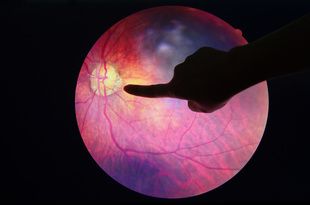Article
Researchers Suggest Biomarker Screening for Diabetic Retinopathy
Author(s):
Genetics are believed to play a role in who develops diabetic retinopathy, because many patients live for years with diabetes and never develop the ocular condition.
Because patients with diabetes are at a greater risk for developing comorbidities and the prevalence of diabetes mellitus continues to grow, identifying patients in early stages of diabetic retinopathy by measuring suitable biomarkers would produce more accurate screening and improve treatment for high-risk patients.
A review published by Neural Regeneration Research explained that diabetic retinopathy (DR) is the leading cause of visual impairment or blindness and is characterized by progressive changes in the retinal microvasculature. Furthermore, DR is also typically an indicator for the diagnosis of diabetes mellitus complications. Because research shows that some with diabetes develop DR while others who live with diabetes for years do not develop it, it is believed that genetic factors help determine who is at risk.
“General risk factors for the occurrence and progression of DR are longer duration of diabetes, hyperglycemia, hypertension, poor glycemic control, and dyslipidemia. While these risk factors are helpful in stratifying a patient’s risk for developing retinopathy, many patients without these traditional risk factors develop DR. Moreover, there are individuals with long diabetes duration who do not develop DR,” explained the authors. “Thus, identifying biomarkers to predict DR or to determine therapeutic response is important.”
Of the studies reviewed, a majority identified specific microRNAs in blood serum/plasma able to distinguish diabetic patients with retinopathy to proliferative DR, while certain microRNAs in vitreous humor were dysregulated in proliferative DR compared to controls.
Additionally, DR can only be diagnosed through formal examination of the eye. The review emphasized that studies have revealed that circulating microRNAs play a significant role in the development of diabetes and should be considered as a tool to predict the development of the disease.
“Circulating miRNA levels can be used for the early prediction of DR with high sensitivity and specificity, and altered circulating microRNA levels may provide a novel minimally invasive biomarker for the early detection of DR,” the researchers stated. “It has been shown that microRNAs have remarkable chemical and physical stability in various body fluids.”
In conclusion, the authors emphasize the need for better screenings and suggest the importance and effectiveness of using biomarkers to better predict and assess disease progression.
Reference
Martinez B, Peplow PV. MicroRNAs as biomarkers of diabetic retinopathy and disease progression. Neural Regen Res. 2019;14(11):1858-1869. doi: 10.4103/1673-5374.259602.

